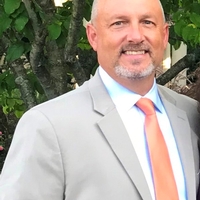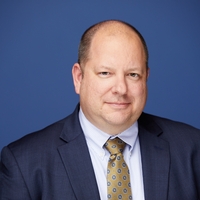SROA Sidebar Blog

SROA's Newest Member-at-Large - Mike Grindstaff
Mike Grindstaff, director, Radiation Oncology at TriHealth Cancer Institute in Cincinnati, Ohio, is SROA’s new member-at-large. He participated in a Q&A to talk about his new role.

SROA's New President-Elect
SROA’s New President-Elect
Aaron Brammer, administrator at Winship Cancer Institute of Emory University in Atlanta, GA, is SROA’s new president-elect. He participated in a Q&A to talk about his new role.

Generation We
“I find that showing people how to behave is better than telling them how”–– John Paul DeJoria
Lee Silber joined SROA to discuss generations during his “Generation We” webinar. Silber, an award-winning author of 26 books, including two best sellers, spoke about the multigenerational workforce, what makes each generation special and commonalities with each generation.

How to Advocate for a Better Patient Experience
When she was diagnosed with ovarian cancer, Kimberly Richardson didn’t have a positive experience. During recovery for what doctors thought was an ovarian cyst, she was tapped on her shoulder and told, “Kim, it’s cancer. We’ll talk with you about it when you’re fully awake.” Later, her oncologist scribbled her specific tumor type––Ovarian Granulosa Cell Tumor Stage 3A, a rare form of cancer—on the back of her referral. “I remember very clearly that my oncologist scribbled on the back of my referral for a follow-up test. It said ‘3A GCT.’ That was the very first time I was introduced to my stage and the type of cancer I had, and I had just met my oncologist,” she said.

The Art of Talking to People, Networking and Building Relationships in Radiation Oncology
“You can make more friends in two months by becoming interested in other people than you can in two years getting people interested in you,” Mattson

Tackling Diversity and Inclusion in Radiation Oncology Through A Broader Lens
“People misconstrue diversity. Diversity encompasses many groups depending upon what is underrepresented in the field,” said Dr. Maria L. Soto-Greene, who is nationally known for her work in diversity, inclusion, health equity and social justice. “Sometimes people equate diversity with underrepresented minorities, which leaves out the many identities that we have. Think about a person who is LGBTQ and also an underrepresented minority. When we fail to consider the assets of a diverse provider, we deprive our communities of the benefit that can be realized in their care.”

Lack of Diversity in Radiation Oncology is Not Simply a 'Pipeline Problem'
If you look at the top 20 specialties, radiation oncology ranks at the bottom with respect to women and minorities, so we need to figure out what we are not doing a good enough job at, recruiting these folks that are going into other specialties,” said Dr. Curtiland Deville, clinical director of Radiation Oncology at Sibley Memorial Hospital and associate professor at Johns Hopkins University School of Medicine.

How to Reduce Stress & Burnout and Build Resilience
“The greatest ability we have as humans is the ability to see beyond our circumstances. It’s about the choices we can make, the choices we need to make now are the in order to move into growth mode in everything you do.” Dr. Peart

Strategies for Diversifying the Radiation Oncologist Workforce
This blog post sources its content from “Diversity Matters”, an article published in SROA’s quarterly news publication Radiation Oncology News for Administrators in April 2020.
Published studies and statistics show that cancer patients from underrepresented populations tend to have poorer health outcomes. According to a 2017 ASCO Post article, “In oncology, just 2% of the physician workforce self-identifies as black/African American and 3% as Hispanic/Latino. In addition, the proportion of black/African American and Hispanic/Latino oncology fellows is consistently lower than many other fellowships in subspecialties in internal medicine.”

SROA COVID-19 Radiation Oncology Q&A
SROA recently hosted a COVID-19 Q&A webinar session with four Board members. The members discussed what their facilities are doing to manage the CDC guidelines and the changing dynamic of the COVID-19 pandemic. All questions asked during the webinar were from SROA members.